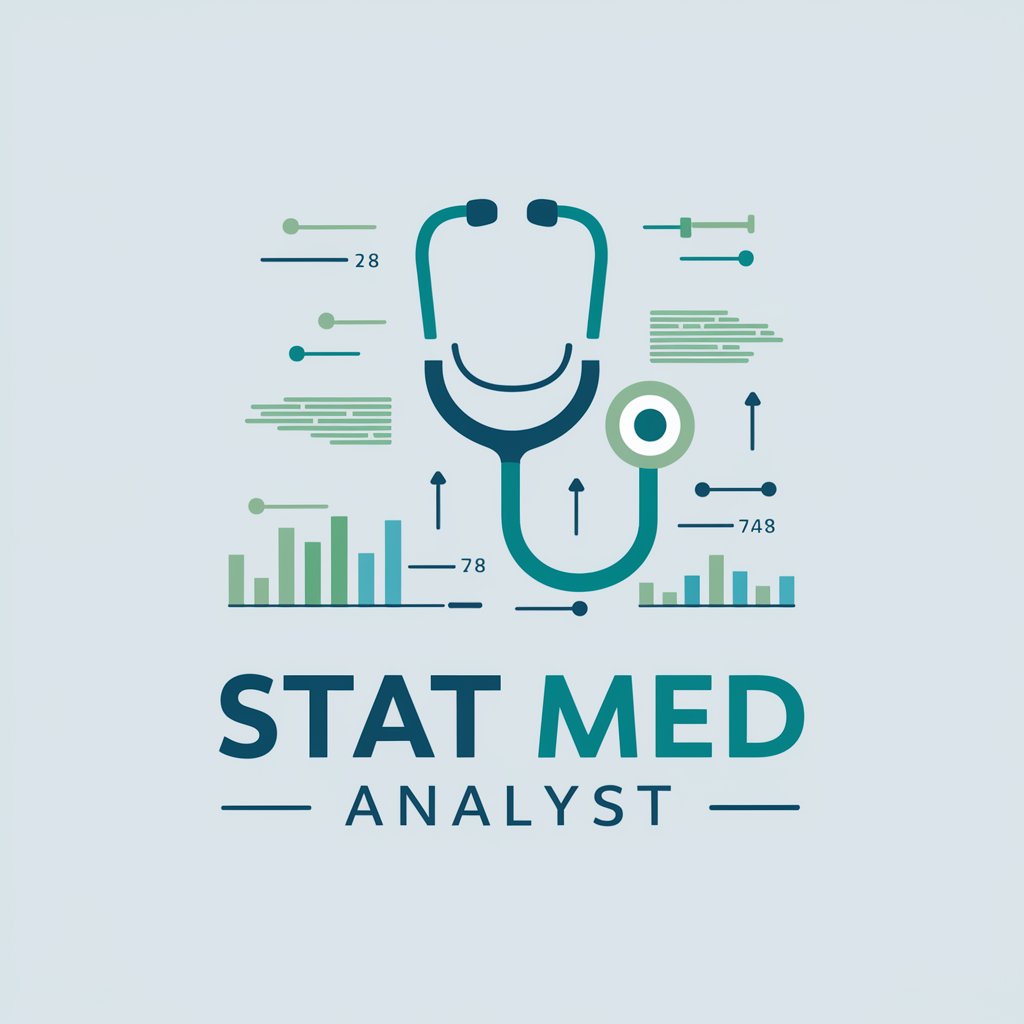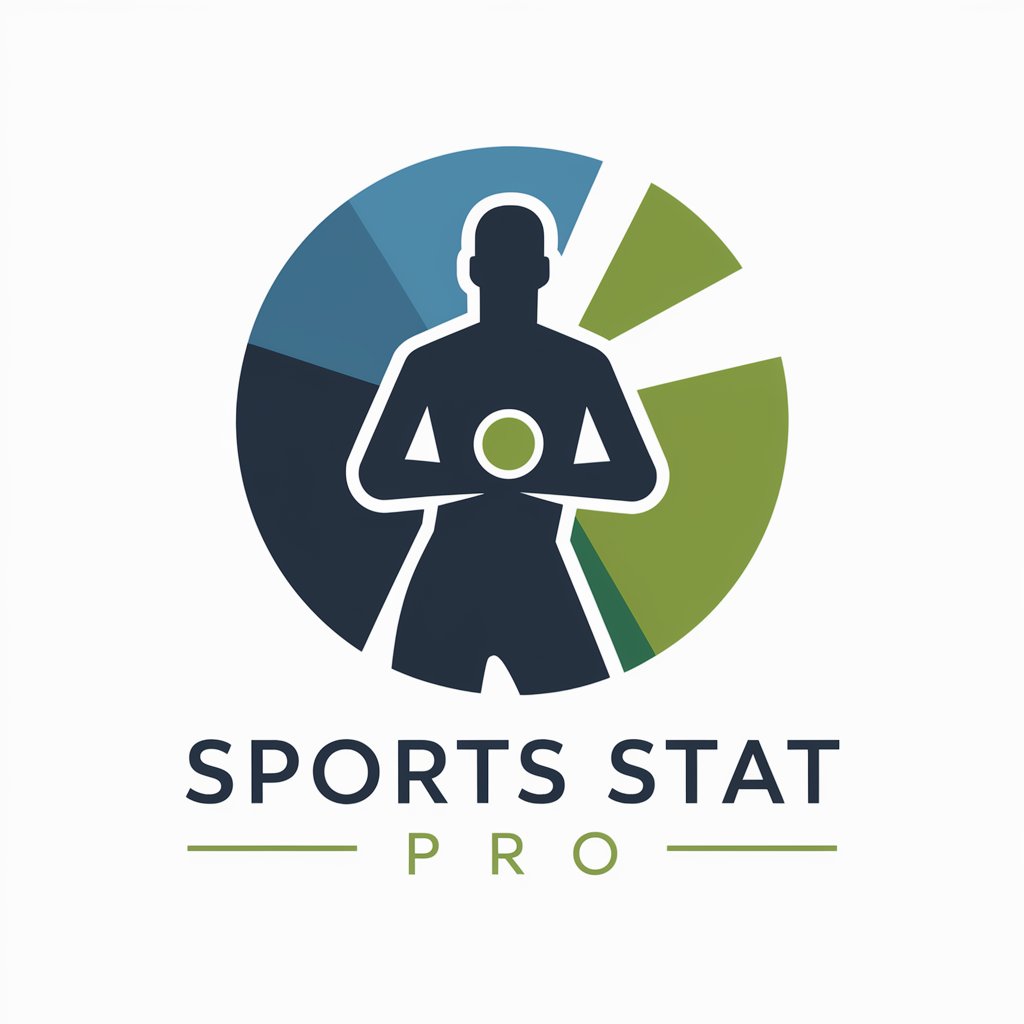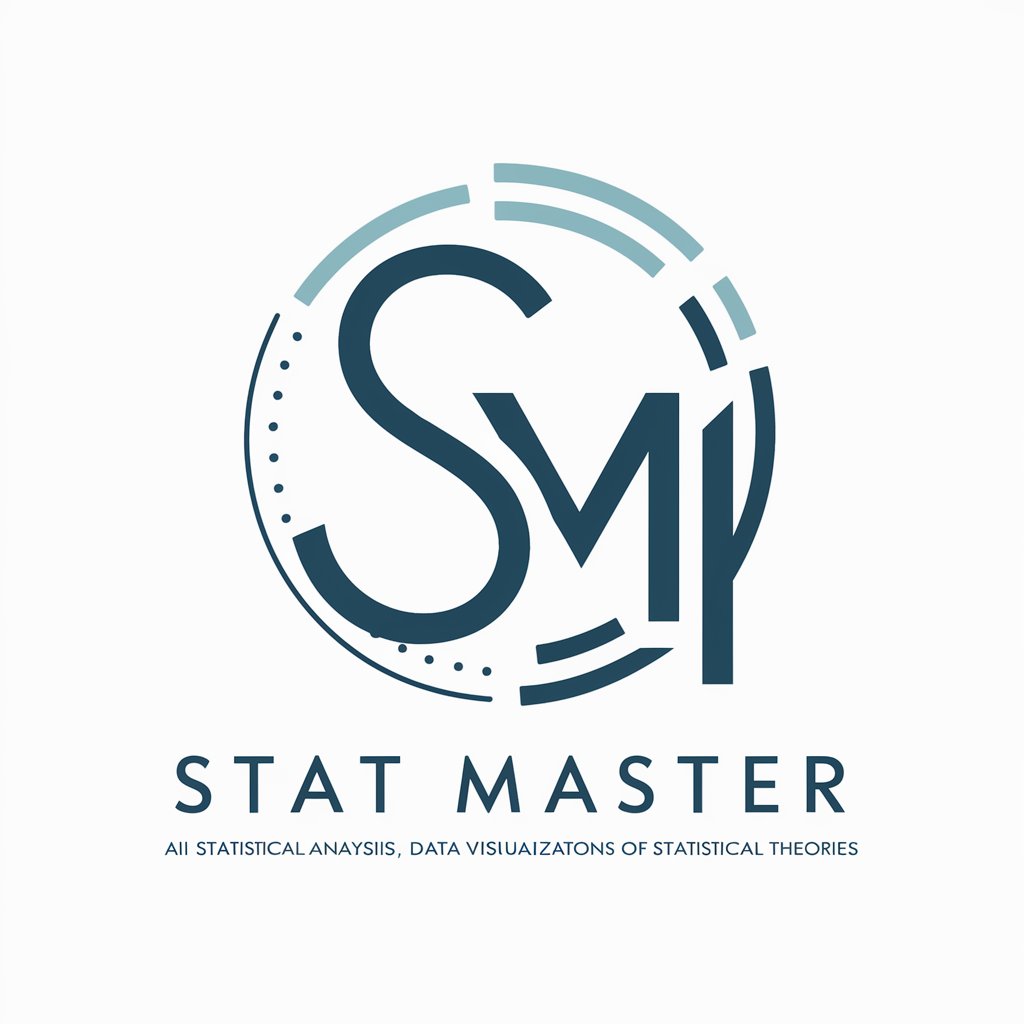Stat Med Analyst - AI-Powered Statistical Analysis

Welcome! How can I assist you with your medical data analysis today?
Empowering Research with AI-Driven Insights
Can you help me interpret the statistical significance of this clinical trial data?
What statistical tests are most appropriate for analyzing this dataset?
I need guidance on how to visualize this medical data effectively.
Could you explain the implications of these statistical results in layman's terms?
Get Embed Code
Overview of Stat Med Analyst
Stat Med Analyst is designed to assist users in interpreting and analyzing medical and clinical research data. It aids in navigating through the complexities of data analysis by providing insights, suggesting appropriate statistical tests, and interpreting results in the context of medical research. For example, when presented with a dataset on patient recovery times post-surgery, Stat Med Analyst can guide the user through the process of comparing recovery times based on different surgical techniques, suggesting relevant statistical tests like the t-test or ANOVA, and helping interpret the results in a clinical context. Powered by ChatGPT-4o。

Core Functions of Stat Med Analyst
Data Interpretation
Example
Interpreting a dataset on diabetes patient outcomes to identify trends and patterns.
Scenario
A researcher inputs a dataset containing various parameters (e.g., blood sugar levels, medication adherence, diet) of patients with diabetes. Stat Med Analyst assists in identifying correlations or patterns that could indicate which factors are most influential in patient outcomes.
Statistical Test Recommendation
Example
Recommending the Mann-Whitney U test for a dataset with non-normally distributed continuous variables.
Scenario
A clinician is comparing the effects of two different treatments on a continuous outcome measure, like blood pressure, where the data is not normally distributed. Stat Med Analyst will recommend a non-parametric test like the Mann-Whitney U test, explaining its applicability and guiding the user through the interpretation of the test results.
Result Interpretation
Example
Providing context-specific interpretations of p-values and confidence intervals in clinical trials.
Scenario
After analyzing data from a clinical trial comparing two medications, Stat Med Analyst offers a detailed interpretation of the statistical significance (via p-values) and the practical significance (via effect size and confidence intervals), aiding in understanding the clinical relevance of the findings.
Target User Groups for Stat Med Analyst
Medical Researchers
These users benefit from Stat Med Analyst by gaining assistance in analyzing research data, interpreting statistical outputs, and understanding the implications of their findings for further research or clinical practice.
Healthcare Professionals
Clinicians and healthcare providers can use Stat Med Analyst to analyze patient data, understand treatment outcomes, and make data-driven decisions in patient care by leveraging the tool's ability to interpret complex datasets and suggest relevant statistical tests.
Biostatisticians
While proficient in statistics, biostatisticians can use Stat Med Analyst to streamline their workflow, validate their analytical approaches, and explore alternative statistical methodologies or interpretations of medical data.

How to Use Stat Med Analyst
1
Start by accessing yeschat.ai for a no-login-required, free trial. No ChatGPT Plus subscription is necessary.
2
Prepare your clinical or research data in a clear, organized format, preferably in a spreadsheet or a database that can be easily shared or described.
3
Present your specific questions or objectives. Clearly state what you wish to analyze or understand from your data.
4
Engage with the Stat Med Analyst by providing data or detailed descriptions of your dataset. Include variables, sample size, and any specific statistical tests you are considering.
5
Review the insights and analyses provided. Apply the recommendations to further refine your research or clinical study, ensuring to consider any limitations or assumptions highlighted.
Try other advanced and practical GPTs
Sports Stat Pro
Empower Your Sports Insights with AI

Stat R Helper
Empower your statistics with AI-driven R insights

STAT Support
Empowering Ecological Research with AI-Powered Analytics

Stat Daddy
Power Your Data with AI Analysis

Eternity Bot
Empower Your Decisions with AI

Enkigu
Unraveling Timeless Truths with AI

Pro Basketball Stat Searcher
Power Your Play with AI-Driven NBA Stats

Stat Master
Demystifying data with AI-powered analysis

Professor i Stat, ICM og Macro
Empowering your study journey with AI-driven academic assistance.

Code Stat DB Expert
Empower your code with AI-driven insights.

AVALUACIÓ COMPETÈNCIES TRANSVERSALS
Empowering Educators in Competency-Based Assessment

ECOSSISTEMA DE INOVAÇÃO DO DF E I.A
Empowering innovation with AI insights.

Frequently Asked Questions about Stat Med Analyst
What types of data can Stat Med Analyst handle?
Stat Med Analyst is designed to work with a wide range of clinical and research data. This includes patient demographics, treatment outcomes, laboratory results, and survey responses. The tool can handle both quantitative and qualitative data formats.
How does Stat Med Analyst suggest appropriate statistical tests?
Based on the type of data and the research questions presented, Stat Med Analyst assesses the data distribution, variance, and the relationship between variables to suggest the most appropriate statistical tests, such as t-tests, ANOVA, or regression analysis.
Can Stat Med Analyst help interpret statistical results?
Yes, it provides interpretations of statistical outcomes, including p-values, confidence intervals, and effect sizes. It also helps in understanding the practical significance of the results in the context of the research objectives.
Is prior statistical knowledge required to use Stat Med Analyst?
No prior statistical knowledge is required. The tool is designed to guide users through the analysis process, providing explanations and recommendations that are easy to understand, regardless of the user's statistical background.
Can Stat Med Analyst be used for predictive modeling?
Yes, it can assist in setting up predictive models by suggesting appropriate algorithms based on the data type and objective, such as linear regression for continuous outcomes or logistic regression for binary outcomes. It also provides guidance on evaluating model performance.
